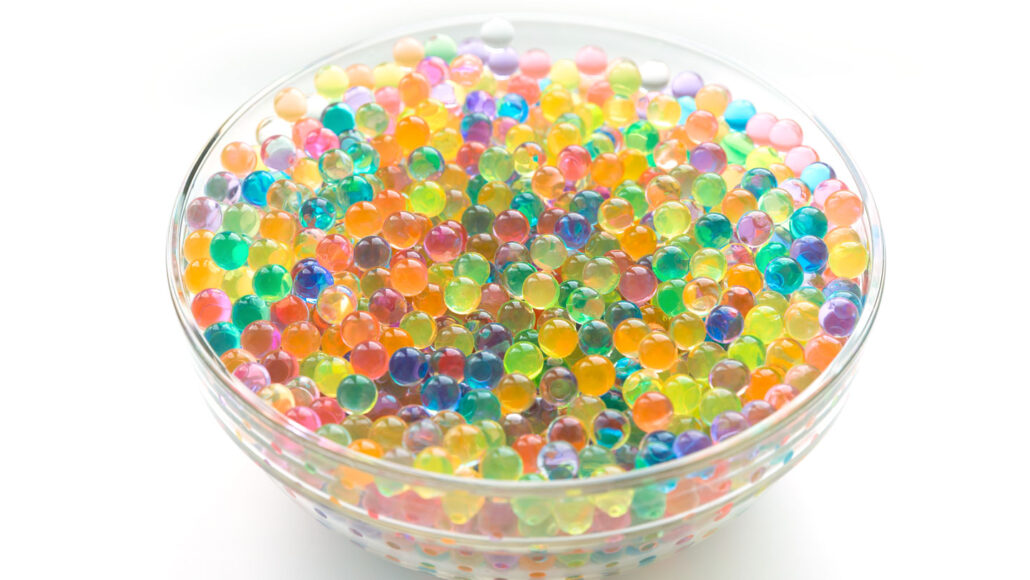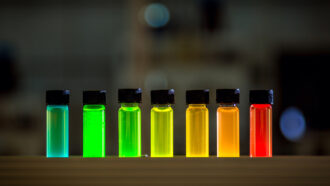collagen: A fibrous protein found in bones, cartilage, tendons and other connective tissues.
gelatin: A substance made from animal collagen, usually bones and cow or pig hides. It starts out as a pale colored, tasteless powder. It contains proteins and amino acids. It can make jiggly desserts (like those known as Jell-O). But this substance also is used in yogurt, soups, candies and more. It can even be used as the basis of the clear capsules used to hold single-serving amounts of dry medicines.
hydrogel: A “smart” material that can change its structure in response to its environment, such as the local temperature, pH, salt or water concentration. The material is made from a polymer — a chain made from links of identical units — that have free, water-attracting ends sticking out. So in the presence of water, this material may hold (bond) those water molecules for quite a while. Some hydrogels are used in baby diapers to hold urine. Others are added to potting soils to hold water near to plants until they need it. Still others may be part of wound dressings to prevent a sore from drying out.
implant: A device manufactured to replace a missing biological structure, to support a damaged biological structure, or to enhance an existing biological structure. Examples include artificial hips, knees and teeth; pacemakers; and the insulin pumps used to treat diabetes. Or some device installed surgically into an animal’s body to collect information on the individual (such as its temperature, blood pressure or activity cycle).
molecule: An electrically neutral group of atoms that represents the smallest possible amount of a chemical compound. Molecules can be made of single types of atoms or of different types. For example, the oxygen in the air is made of two oxygen atoms (O2), but water is made of two hydrogen atoms and one oxygen atom (H2O).
polymer: A substance made from long chains of repeating groups of atoms. Manufactured polymers include nylon, polyvinyl chloride (better known as PVC) and many types of plastics. Natural polymers include rubber, silk and cellulose (found in plants and used to make paper, for example).
synthetic: An adjective that describes something that did not arise naturally, but was instead created by people. Many synthetic materials have been developed to stand in for natural materials, such as synthetic rubber, synthetic diamond or a synthetic hormone. Some may even have a chemical makeup and structure identical to the original.
tissue: Made of cells, it is any of the distinct types of materials that make up animals, plants or fungi. Cells within a tissue work as a unit to perform a particular function in living organisms. Different organs of the human body, for instance, often are made from many different types of tissues.
tool: An object that a person or other animal makes or obtains and then uses to carry out some purpose such as reaching food, defending itself or grooming.









